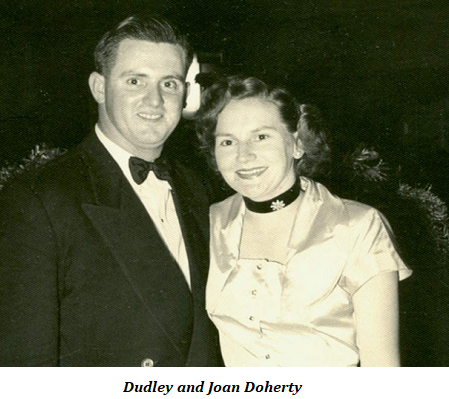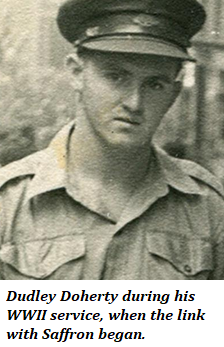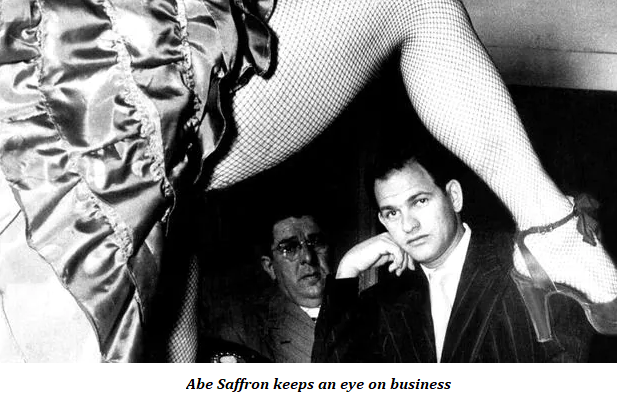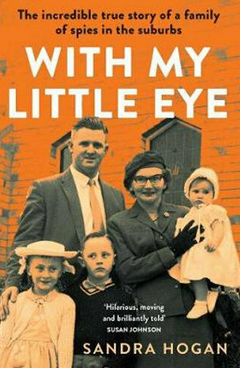
The ABC series on the Ghost Train fire in Sydney’s Luna Park was great TV. Congrats to Caro Meldrum-Hanna and her ABC team’s 18 months of investigation of the fire. That’s right, you’re reading this in Quadrant Online, but praise where praise is due.
What a parade of crooks helped in the sleazy cover-up of undoubted arson on June 9, 1979: Inspector Doug Knight, who bulldozed the burnt site within half a day and stymied any forensic work, and his mafia-linked Deputy Police Commissioner Bill Allen who resigned in disgrace three years later.[1] Then we go one step up to the premier who appointed Allen, Neville Wran, and then even higher to Mr Justice Murphy on the High Court. They were all in thrall to NSW’s crime czar and mobster Abe ‘Boss of the Cross’ Saffron.
The ABC program provides evidence that Saffron organised bikies to light the ghost train fire that incinerated one father and six schoolboys. Saffron then secretly acquired the Luna Park real estate, with help from Wran and Lionel Murphy.[2]
One player in the tawdry NSW scene wasn’t mentioned in the series: the Australian Security Intelligence Organisation. Through much of Saffron’s career, a top ASIO operative, Dudley Doherty, was Saffron’s best mate and actually did the mobster’s secret accurate accounts, as distinct from the tax accounts. Doherty, when not mole-hunting or spying on communists and their associates, was enjoying Abe’s prostitutes in Abe’s brothels. As foreplay, he fed the ladies plates of oysters. Doherty died in office in 1970, long before the Ghost Train fire, while Saffron died at 87 in 2006.
Doherty’s long-time boss was ASIO chief Sir Charles Spry, who left office the same year Dudley died. His successor was the randy and hopeless Peter Barbour (1970-75) followed by Frank Mahony and Justice Sir Edward Woodward.[3] Did ASIO post-Doherty continue its intimacies with Saffron? Who knows?
 Was Doherty a rogue ASIO operative moonlighting for a mobster? Or was his decades-long intimacy with Saffron in the line of ASIO duty? We all know how J. Edgar Hoover controlled US presidents Truman, Nixon and Kennedy through his blackmail-worthy files on their peccadilloes. ASIO’s Doherty must have collected for Spry a heap of dirt on top NSW and federal figures, including long-serving and corrupt NSW Premier Robert Askin. (Saffron had been paying Askin and his equally corrupt police commissioner Norm Allen $5000-10,000 a week, in return for protecting his illegal liquor, brothel, loan sharking and gambling activities across mainland Australia. That’s as much as $70,000 a week in today’s money in 1975, Askin’s last year in office). Doherty also winked at Saffron’s thuggery, crimes, and tax evasion.
Was Doherty a rogue ASIO operative moonlighting for a mobster? Or was his decades-long intimacy with Saffron in the line of ASIO duty? We all know how J. Edgar Hoover controlled US presidents Truman, Nixon and Kennedy through his blackmail-worthy files on their peccadilloes. ASIO’s Doherty must have collected for Spry a heap of dirt on top NSW and federal figures, including long-serving and corrupt NSW Premier Robert Askin. (Saffron had been paying Askin and his equally corrupt police commissioner Norm Allen $5000-10,000 a week, in return for protecting his illegal liquor, brothel, loan sharking and gambling activities across mainland Australia. That’s as much as $70,000 a week in today’s money in 1975, Askin’s last year in office). Doherty also winked at Saffron’s thuggery, crimes, and tax evasion.
You can read the sanitised account of Dudley Doherty and his wife Joan (also an ASIO agent) scattered through the pages of David Horner’s 2014 official history of ASIO — Volume 1, The Spy Catchers. Horner celebrated the Dohertys chiefly for the family’s role in harboring the Vladimir and Evdokia Petrov defectors when they were at maximum risk from Soviet assassins during the 1956 Olympics. Joan had also toiled at early and primitive intercepts of Soviet spies’ conversations.
Paul Monk: Soviet Moles in Australia
Dudley Doherty was also ASIO’s lock-picker extraordinaire. Horner relates that Doherty, to pass a special lock-picking course, had to choose an apparently un-pickable lock. He picked the personal safe of ASIO boss Spry and left a note in it, “which did not go down well with Spry”.[4] However Sandra Hogan, quoting the family, says the safe belonged to Director-General Justice Geoffrey Reed, not Spry.
Another evening, according to Doherty’s kids, Mark and Sue-Ellen, they got themselves locked into the subway under the Anzac memorial in Brisbane, behind heavy iron bars. Their father, rather than go through the rigmarole of calling the city council, instead paid the gates a visit with his lock-pick kit and the kids were free immediately. The kit? It was “in a leather roll, like a jewellery roll, only with little pockets. And the triangular tools inside. They got narrower and narrower and narrower. They had points and hooks of all different shapes”[5]
In ASIO’s three-volume official history there is no mention of Saffron.[6] The ASIO/Saffron revelations are in a new and extraordinary biography of the Doherty family by journo Sandra Hogan, With my Little Eye: the incredible true story of a family of spies in the suburbs.[7]
Dudley and Joan educated their three kids about their ASIO jobs from the time they left their cots. The Dohertys taught them tradecraft against Communists and spies, such as memorising number plates and learning to accurately describe a suspect’s clothing, manners and behaviour. They also trained the kids to keep silent on all the secrets of ASIO spying – even from each other, let alone from other family, school — friends and acquaintances. The kids’ childhoods were spent in a maze of mirrors where all their bits of ASIO knowledge had to be secretly compartmentalised. For example, the kids must never remark to a Croatian contact about a Serb contact who had dropped in to dinner the night before. Or mention their frequent visitor “Uncle Mick”, an ASIO boss.
The Doherty spies used their kids as props. The kids would pose for street photos while Dudley actually focused on suspects behind them. Or Dudley would drive around the block, past Trades Hall or a private house, to monitor suspects. First time, three kids in the front seat. Second pass, two in the back and one hiding on the floor. Further times, they changed clothing and kept popping up and down: “They looked so average they were invisible. They were right there but no one noticed them.”
I thought my own childhood was tough growing up as a primary-school Stalinist in a household of Communist Party executives. But my opposite-number kids in their ASIO household had it far tougher.
Brisbane journo Hogan interviewed the Doherty kids as middle-aged adults. At last they could take some family jigsaw pieces out of their brain compartments and fit them together. But none could create a coherent picture of Dad Dudley … and especially not of Dudley’s dealings with Saffron.
That connection began during the war, when Dudley graduated from the Salvation Army (playing the euphonium) to the real army at Moorebank depot in southwest Sydney, rising to warrant officer second class. One of his corporals and (literally) procurement specialists was Saffron. But his friendship with Saffron became life-long. Hogan writes,
The wartime period was the only time that Abe worked for Dudley. Later on, the relationship was reversed. Abe served in the army for less than four years before he left to set up Staccato, the first of his strip clubs in Kings Cross, offering a welcome service to the American GIs looking for fun in Sydney.
“He never wasted an opportunity and, while he was in the army, he spotted Dudley’s talent for bookkeeping. Abe hired him to do the stocktakes for his clubs, a role Dudley continued to do for the rest of his life, even while he worked for ASIO. Dudley’s books were the real ones, which were hidden, while somebody else prepared a different version for the taxation department.
“It would be interesting to know whether Dudley told ASIO about these extra-curricular activities, and how they viewed his work for Abe, but that is one of the many secrets Dudley took to his grave.
It’s obvious that Saffron’s army “procurements” were lucrative enough to finance his Staccato nightclub.
Mother Joan Doherty was always an upright and loyal citizen. Hogan writes that she always insisted that, whatever Abe was, Dudley wasn’t a criminal—he just liked to stretch things to the limit. ‘He was a rogue, but he was a good person,’ she said…

Rather improbably, Hogan says Dudley might have swallowed Abe’s persona
as a family man and a philanthropist and it is possible that Dudley did not know the extent of Abe’s crimes. Joan knew from the beginning that Abe was Dudley’s friend, but they did not discuss Abe’s business life. By the time Abe had become notorious, Joan would have guessed, perhaps even known, that Abe’s hospitality to Dudley included the use of the ‘girls’ in his brothels; she may have suspected that Dudley knew Abe’s books were rigged. But she never believed Dudley knew about the possible murder, drugs and extortion. It probably took a long time for her to believe those things of their old friend, as she was highly sceptical of what she read in the newspapers…
The bond remained when the Doherty family moved to Brisbane. Joan always put Abe’s Christmas cards featuring snow and angels at the front and centre of their collection on the best dresser. Dudley and Joan sometimes holidayed in Sydney at Abe’s digs, with treats “on the house” as thank-you’s for Dudley’s book-keeping.
“Every year, he went down for a few days and helped Abe do his stocktake. It was hard work and he always came back exhausted,” the family recalled.
Dudley gave his lad, Mark, at 16 a card for Abe’s Pink Pussycat club and told Mark to see Abe in Sydney and get a good time. But Mark “chickened out” of that thorough-going sex education.
Joan was a trained observer and no fool, so she must have kept quiet about some of the things she suspected or knew. In an expression from her youth, she ‘put up with things’. Secrecy and containment were features of their marriage from beginning to end … He was away so often from Joan. And there were the prostitutes he visited with oysters, and the girls at Abe’s clubs. He said he was working. She kept asking if he was sleeping with other women and he finally admitted it … He said it was separate, it was work, it didn’t have anything to do with them and their undying love. Joan thought about leaving, but what would become of her and the children? She would wait. She was a perfect ASIO wife, supporting Dudley in every way.”
Dudley did, however, get the silent treatment for hours or days.
Joan knew that if she spoke, she might say things that could never be taken back. So she simply took away the warmth of her regard and let him shiver. Despite Dudley’s faithlessness, Joan liked to believe that they were equal partners, that she wasn’t submissive like her mother, or her sister Clair who was married to a bully.
The kids rea lised that Dad might mix with criminals and villains, but that was ‘work’. But when Sue-Ellen fell in love with an older man, “suddenly she couldn’t help wondering what it actually meant that Abe Saffron was Dad’s best friend and that Dad took oysters to visit brothels. Who was her father, really?
lised that Dad might mix with criminals and villains, but that was ‘work’. But when Sue-Ellen fell in love with an older man, “suddenly she couldn’t help wondering what it actually meant that Abe Saffron was Dad’s best friend and that Dad took oysters to visit brothels. Who was her father, really?
Sue-Ellen eventually met with Dudley’s long-time ASIO boss Mick (known to the kids as “Uncle Mick”) to seek the truth.
‘But how could you be the director and not know what was going on?’ she asked him, frustrated. ‘That’s how we kept secrets,’ he said. ‘Well, I think there were things about Dad you didn’t know,’ she told him. ‘I just don’t know if he was everything we thought he was,’ she continued.
‘Sue-Ellen, do you think your father was a double agent?’ he asked her. ‘No. No. But why was he friends with Abe Saffron?’ she blurted out.
‘Ah,’ he said. ‘I can see that would worry you. Well, don’t worry too much about it. Your dad served our country well.’ There was something those ASIO men did—she didn’t know what it was—but people always ended up telling them everything and they never revealed anything.
The Dohertys were ASIO key workers almost from its inception. Dudley was one of three ASIO eavesdroppers – I won’t call them ‘buggers’ – who bugged a flat above a NSW Communist Party meeting room. Dudley also picked the locks to let them break in.
Joan, too, was an ASIO pioneer, specialising in telephone tapping Soviet MVD/KGB operatives like “Tass correspondent” Fedor Nosov. She worked ‘behind a green door’ in a basement in ASIO headquarters typing up recordings made on a Pyrox wire recorder. She kept this work secret even from her fellow spy and husband Dudley, little knowing that Dudley himself had helped install the taps.
Joan left ASIO when her first child was born, but the Dohertys continued living in a flat alongside Nosov in Darlinghurst, assisting the phone taps. It must have been a crowded flat with ASIO officers also there working in shifts round the clock monitoring the devices.
“She recalled that she tiptoed around the flat and her children wore slippers so that the ASIO officers could listen to what was happening without hearing thudding in their headphones. She made coffee and fed the officers on duty,” Horner writes.
Later the Dohertys ran a house for the Petrovs in Northcliffe, Qld. The Petrovs were not trouble-free boarders. One night Vladimir was arrested while drunk after he tried to enter a residence at Surfers Paradise that he mistook for his flat. He got into a fight with the residents, which destroyed his trousers. (Malcolm Fraser would sympathise.) Police took him to the Southport Police Station, charged him with drunkenness and released him the next morning on ten shillings’ bail (forfeited, says Horner).
Harry Blutstein: Vladimir Petrov in Surfers Paradise
I happened to read Sandra Hogan’s book With My Little Eye and its ASIO/Saffron revelations mere days before watching the ABC’s Caro Meldrum-Hanna’s expose on police and other corruption concerning the Ghost Train arson and Abe Saffron. What value was ASIO boss Spry getting from Saffron? I asked myself, What was ASIO’s relationship with Saffron from 1970 (Doherty’s death) to 1979 (the Ghost Train fire) and thereafter? It’s obvious that ASIO senior spy Doherty was personally corrupt. How corrupt was ASIO?
Tony Thomas’s new book, Come To Think Of It – essays to tickle the brain, is available here as a book ($34.95) or an e-book ($14.95)
[1] Commissioner Mervyn Wood, scandal-plagued, stepped down four days before the Luna Park fire.
[2] Luna Park’s new lease-holder was run by Saffron’s two cousins and nephew, while he installed 100 gaming machines there.
[3] Molly Sasson, long-time UK and Australian intelligence agent with ASIO from 1969-83:
[Barbour] was a tall male with heavy-lidded eyes behind horn-rimmed glasses, often described as having “bedroom eyes”. His conduct did not befit his position. He certainly was not the gentleman that his high office demanded. He was a creepy individual whom I instinctively avoided … He was a very complex character with airs and affairs. He betrayed his office by chronic mismanagement and exploitation of his position for sexual favours. He had a voracious sexual appetite which offended many people’s moral and professional perceptions …
Whitlam sacked Barbour after Barbour returned from a lengthy but unproductive overseas trip reviewing counterpart agencies, accompanied by his beautiful Eurasian secretary.
[5] From Sandra Hogan’s biography
[6] The later volumes were The Protest Years and The Secret Cold War.
[7] Allen & Unwin, Crows Nest, 2021.
 Sign In
Sign In 0 Items (
0 Items ( Search
Search










A very useful piece that encourages these questions:
Who is paying for the kinds and degrees of corruption that now animate Australian life?
At whose actual expense occur the daily acts of money-scooping and power-grabbing by the many persons protected by various protective devices?
I think it’s the Ordinary People who go to work all day, every day, and make sacrifices to raise their kids, and who obey the laws of the land.
Some of these Ordinary People get embittered and use excessive alcohol and other kinds of self-destructive consumption as they come to realise the massive corruption that pervades all of our institutions.
And they can see the malign idiocy of taking guns off law-abiding farmers while leaving guns in the hands of criminals, and leaving violent people on the streets and in homes-
-and by bringing in by plane, not boat, parasitic, violent, anti-White hordes from all over the place.
And these are simply a few of the more recent sources of corruption in Australian society today that impose huge costs on the Ordinary People, to add to those that always existed.
Now consider this:
Consider the thousands/millions of large fortunes accumulated by corrupt persons -by way of the industries in drugs; prostitution; acquisition of others’ property by violence; by blackmail, backhanders and bribes; by diversion of public funds to private pockets, and such.
Then the criminals die.
How did the inheritors use those fortunes?
What did the inheritors invest those funds in?
No doubt they consumed a lot of houses, cars, sight-seeing trips, expensive booze, expensive food.
But in what sectors of the Australian economy were surplus funds invested in?
And how much of those funds were exported to foreign lands?
Be interesting in itself, and would provide clues about how much money now created within Australia is exported to foreign parts, many of them anti-Westernist.
Ah, for the good old days, when some criminals were politicians and some politicians were criminals. Today, the problem is that ‘some’ is replaced by ‘nearly all’ with the $$ extracted from the honest people through boondoggles like ‘renewable energy subsidies’ on a far larger scale.
Harry Lee wonders what happens to the large fortunes accumulated by corrupt politicians and their criminal accomplices. While I have no evidence to support my view, my impression is that most of the notoriously corrupt politicians have been extraordinarily cheap, being bought and sold for relative chump change. Reportedly, the rare individual has been nifty enough to do better than others who were easily satisfied by the contents of the occasional smallish brown bag from their favourite bookies, but on the whole the supposed fortunes have been trivial.
A fascinating article but the author does not understand ASIO collection methodology. ASIO was in contact with Saffron for one reason – he was a source of information and the ASIO contact with him was routinely reported and approved by ASIO NSW / HQ and DG Spry. ASIO was interested in Saffron’s political contacts and “friends”, particularly the then future AG Lionel Murphy. The ASIO officer “Uncle Mick” referred to in the article and book was an honourable person who devoted his life to the security of Australia.
The official (fake) history of ASIO cited by Thomas is an ASIO artefact and a grey propaganda perception operation to influence the Canberra political class — it is official, but not history. It is certainly not an historical source.
Peter Barbour was the last ASIO officer appointed DG. He was a good B2 CE officer especially in the Ivanov case but he never fully recovered from the shock of the Murphy raid on HQ in March 1973.
No ASIO officer has been appointed DG since Barbour was sacked in 1975. No ASIO officer has been trusted by successive governments to be appointed DG Asio for 45 years! Why?
Doubting Thomas -perhaps so, yes.
But I wonder about the fortunes amassed by persons of recent foreign origins, perhaps as facilitated by home-grown politicians and police, who transfer large sums to those foreign ancestral lands for purposes both of their own investment and later retirement, and to fund anti-Westernist activities which then incur more expense in Western lives and Western money, some of which are Australian-
That, as the Australian mainstream media (which is 90% anti-Westernist, starting with the ABC and SBS, but extending far into the commercial news/opinion media), demonise the ADF, starting with the SASR and the Commando Regiment.)
Here at home, we are infiltrated by many enemies, and by home-grown enemy-supporting scum, is the point really.
The Dummy Country.
Thanks Harry, useful material.
If Doherty was intimately with Saffron for intelligence reasons, no issue. But Doherty was (a) conniving at and facilitating Saffron’s tax evasions, and (b) getting free use of Saffron’s brothels for (presumably) personal enjoyment, although Doherty might also have been getting ‘briefs’ from the ladies. And who knows what else was going on between Saffron and Doherty? My information from the books is pretty fragmentary.
Tony Thomas -all my respect and best wishes to you as you continue your excellent work -Harry.
Great again, TT.
My grandfather was a high powered sollicitor during the time Lionel Murphy was rising to prominence in the 60s and 70s. He never talked much about his work, and the only thing I remember apart from when he took sometimes us into his grand old bluestone office, was that he absolutely hated Murphy. He was a pretty even tempered old boy, but Murphy made his blood boil.
As an aside, in the late 90s a work colleague in Sydney told me that as a student and in those days a keen political wannabe, he had worked in an intern-style role in the office of a NSW Premier, whose name is mentioned in this article. He claimed (and I’ve no reason to disbelieve him) that one of his occasional duties was to take the Premier and whichever property developer he was meeting for an aimless drive whilst they discussed matters. The Premier’s view apparently was that it was quite possible that the offices were under electronic surveillance, but that it was much less likely that a conversation could be effectively bugged in a moving car.
When this premier died, I remember being surprised that the very considerable wealth accumulated after a lifetime spent in a modest professional role followed by years in politics. Possibly he was indeed simply a very successful investor, but I had always thought that given his character and connections maybe other factors had been at play.
Red Robbo -perhaps you are referencing the NSW premier who was open in saying that he always reported ALL of his income, from whatever source, to the ATO and always paid tax on ALL of his income, whatever the source. And that he took home money by the truckload.
Good piece Tony. I think Doherty maintained his friendship with Saffron as a valuable information contact, because people of all types and persuasion can like a good time, particularly in the tense world of espionage and Saffron’s night clubs were no doubt enjoyable places to visit for just that reason. The girls would have got lots of information from them and passed it on to Saffron, and Doherty would have got that information. The red light areas in a free country, were, and no doubt still are, great places to collect intelligence that would have served the country well, as I think Doherty did, that is of course if one is of the mind that there is such a thing out there as enemies of the Nation Australia ?